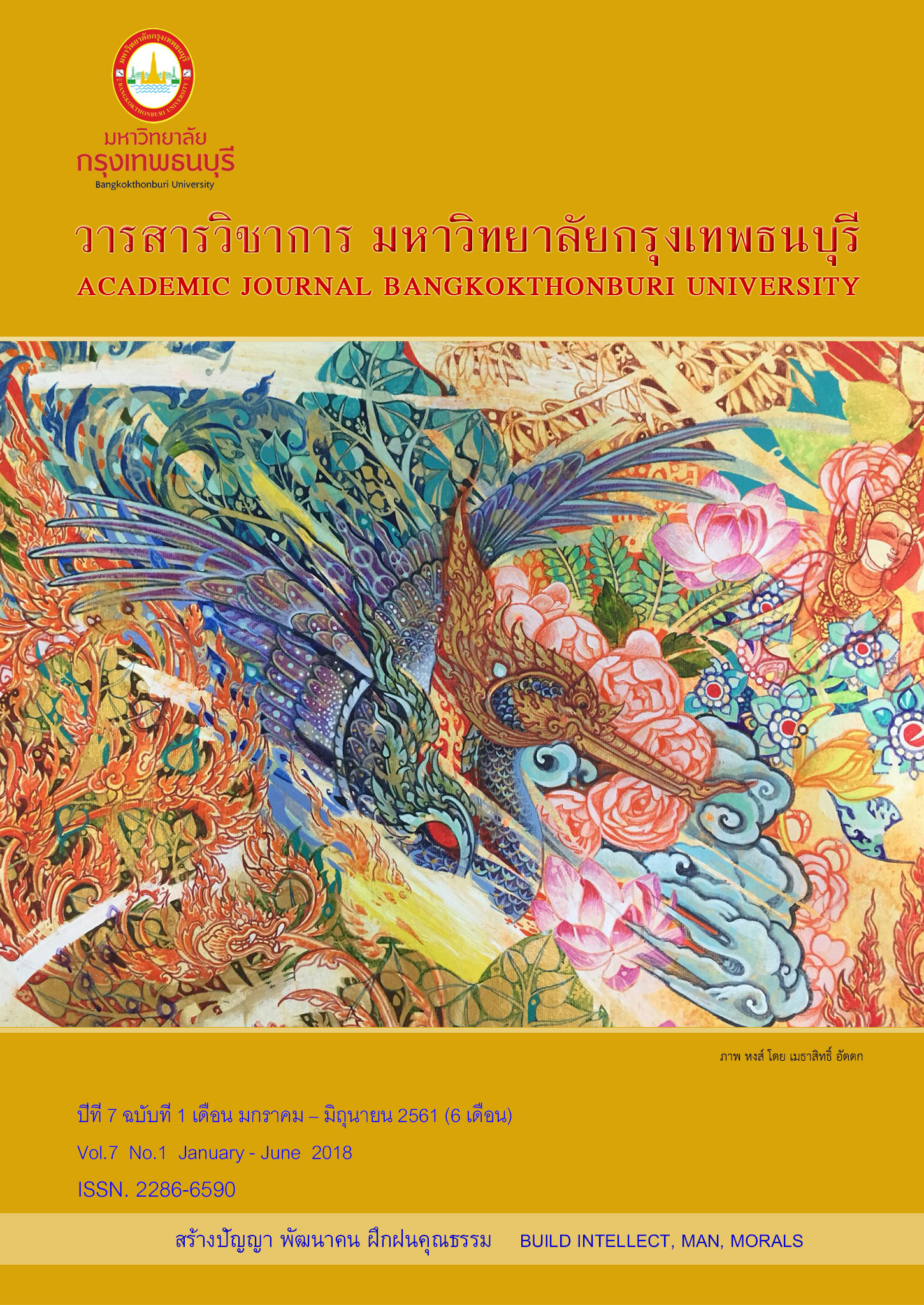Factors Influencing the Organizational Effectiveness of Automobile Manufacturing Industry in Thailand
Main Article Content
Abstract
This study was the mixed method between quantitative and qualitative research. The objectives of the study were: first, to investigate the direct and indirect influence and its combination on the model of organizational effectiveness of automobile manufacturing industries in Thailand; and second, to determine the causal influence on the organizational effectiveness of automobile manufacturing industries in Thailand. The derived model wound be used as guidelines for the enhancement of the organizational effectiveness of automobile manufacturing industries in Thailand. 397 employees working in the automotive industries were used as the sample for the study by using Accidental sampling technique. The analyze used Structural Equation Modeling (SEM).
The result of the analysis found that: the causal factors influencing the organizational effectiveness of automobile manufacturing industries in descending order of degree were as follows: organizing, knowledge management, and leadership styles. The analysis of the model clearly indicated that the model was in congruent with the empirical data. Organizing was positively direct influence to the knowledge management (DE=0.22), the leadership style was positively direct influence to the knowledge management (DE=0.47), and the knowledge management was positively direct influence to the organizational effectiveness of automobile manufacturing industries in Thailand (DE=0.41). Moreover, organizing and the leadership style ware positive both direct and indirect influence on the organizational effectiveness of automobile manufacturing industries in Thailand. (TE=0.56, 0.24)
The results of the qualitative data indicated that the opinions of the key informants were in line with the results obtained from the quantitative research. Leaders should have a vision, division of work by organizing the department. It also promotes the coordination of the various parts of the exchange.To develop the organization to meet the goals and needs of consumers. This is consistent with the results of quantitative research.


